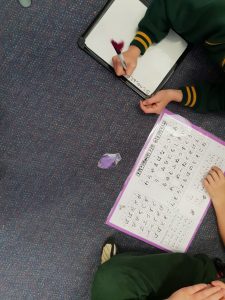みんなさん 今日は!
ようこそ to Term 1 of 2019! Hope everyone had a lovely Christmas and New Year break and are refreshed and ready to go again this year. In the Junior Japanese room in 2019 our classes have changed slightly with students in years 1, 2, 3, and 4 having one 50 minute lesson a week, and the year 5’s having two 50 minute lessons a week. The Reception students, while not getting their own lesson, will have a 15 minute pop up lesson in their own classrooms once a week (with exception to Mrs. O’Neills class in term 1).
This term the students will be looking at covering some new topics that will also be used as some revision as we combine previously learned knowledge with new knowledge:
Year 1/2: Weather and Seasons
Learning how to ask and answer what the weather and seasons are.
Year 3/4: The story of Neko Chan and Sakana San
Looking at the use of basic sentence structures, frequently used kanji, colour revision, adjectives, and repetition through storytelling.
Year 5: At The Hamburger Shop
Learning about the fast food industry in Japan and how to order a meal with a variety of sentence structures.
Here’s to a fantastic start of the year!
Coghlan 先生 より。




